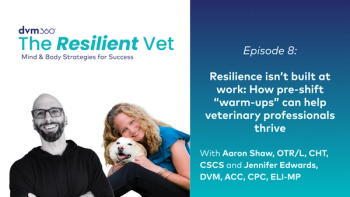
Risk Factors and Complications Associated With Central Venous Catheterization
Complication rates in canine and feline patients were high in a recent study, but how serious were the issues?
Central venous catheterization is typically performed during intensive care to facilitate blood sampling, medication delivery, and monitoring of central venous pressure and oxygen saturation.
Study Design
The prospective study targeted canine and feline patients hospitalized in a university teaching hospital’s intensive care unit (ICU). CVJCs were placed by an ICU-certified veterinary technician, emergency and critical care resident, or ACVECC diplomate using the modified Seldinger technique. CVJCs were inserted in the jugular vein, advanced to the fourth intercostal space, sutured in place, and dressed. Catheter size and length were chosen based on patient body weight and species. Sedation or anesthesia was chosen at the clinician’s discretion, and heart rate, rhythm, and blood pressure were monitored during placement.
RELATED:
- Complications Associated With Arterial Catheterization in Cats
- Measuring Arterial Blood Gas in Animals
Insertion sites were cleaned and inspected daily for signs of complications, and CVJCs were removed and cultured for bacterial growth if signs of inflammation occurred.
Results
Twenty-seven dogs and 20 cats were included in the study over a 13-month period, representing both sexes and a wide range of ages, sizes, and breeds. Most patients were hospitalized for surgical procedures.
Catheterization technique was as follows:
- All patients were anesthetized, heavily sedated, or severely obtunded during catheterization.
- All CVJCs were multilumen and 4- to 7-Fr in diameter.
- 73% of CVJCs were inserted in the right jugular vein.
- 25% of catheterization attempts included a facilitative skin incision over the vessel.
Catheterization was successful on first attempt in 85% of dogs and 70% of cats, while the remaining patients required 2 to 5 attempts. Older patients and those with a lower body weight or body condition score were more likely to require multiple catheterization attempts than were other patients.
Indwelling CVJCs were placed successfully in 91.5% of patients and remained in place for a median of 3 days in dogs and 5 days in cats. Catheterization in cats was most successful when performed by more experienced personnel, while CVJC placement in dogs was uniformly successful whether performed by a technician, resident, or clinician.
The most common complication during CVJC placement was dysrhythmia during guidewire placement, occurring in 15% and 45% of dogs and cats, respectively. The most common indwelling complication was mechanical obstruction (39% of catheters), followed by skin irritation (33%), malposition (22%), and inflammation (6%). Eleven percent of catheters were removed due to complications, but none yielded bacterial growth. Catheters that had a longer dwell time, received infusion of an irritant medication, or were placed by a more experienced operator were associated with higher indwelling complication rates.
Major Conclusions
This study revealed a relatively high complication rate associated with central venous jugular catheterization in canine and feline patients, although few cases necessitated catheter removal. Older and smaller patients required more catheterization attempts, on average, than did other patients.
Dr. Stilwell received her DVM from Auburn University, followed by a MS in fisheries and aquatic sciences and a PhD in veterinary medical sciences from the University of Florida. She provides freelance medical writing and aquatic veterinary consulting services through her business, Seastar Communications and Consulting.
Newsletter
From exam room tips to practice management insights, get trusted veterinary news delivered straight to your inbox—subscribe to dvm360.




